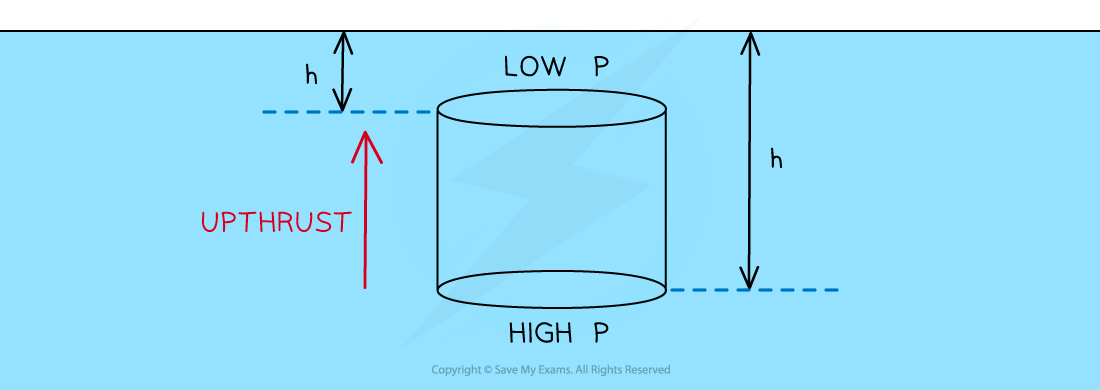Upthrust (Cambridge (CIE) AS Physics): Revision Note
Exam code: 9702
Upthrust
Upthrust is a force which pushes upwards on an object submerged in a fluid (liquids and gases)
Also known as buoyancy force, upthrust is due to the difference in hydrostatic pressure at the top and bottom of the immersed object
The force of upthrust is significantly greater in liquids than in gases, this is because liquids are much denser than gases
Recall that hydrostatic pressure depends on the height (h) or depth that an object is submerged in from p = ρgh
Therefore, the water pressure at the bottom of an object is greater than the water pressure at the top
Upthrust on a cylinder immersed in water

The cylindrical object will experience upthrust due to the difference in hydrostatic pressure
Upthrust is a force and is directly proportional to the pressure. The force on the bottom of the can will be greater than the force on top of the can
This resultant pressure causes a resultant upward force on the can known as upthrust
Upthrust is why objects appear to weigh less when immersed in a liquid. If the upthrust is greater than the weight of the object, the object will rise up
For an object to float, it must have a density less than the density of the fluid it is immersed in
Worked Example
A steel cube with cross-sectional area of 2 m2 is totally immersed in water. The scale balance reading is reduced when the cube is immersed.

The cube experiences pressures of 3000 Pa and 7700 Pa at the top and bottom of the cube respectively.
Which value is equal to the upthrust on the cube during immersion?
A. 9400 N
B. 6000 N
C. 15400 N
D. 92210 N
Answer:
Step 1: List the known quantities
Pressure at top = 3000 Pa
Pressure at bottom = 7700 Pa
Cross-sectional area of cube, A = 2 m2
Step 2: State the pressure equation and rearrange to make force the subject
Step 3: Substitute in the known values to calculate
The value for pressure needed is the change in pressure between the top and the bottom of the cube
Therefore, the correct answer is A
Examiner Tips and Tricks
Since upthrust is a force, it is influenced by pressure, not by the density of the object as commonly misunderstood.

You've read 0 of your 5 free revision notes this week
Unlock more, it's free!
Did this page help you?